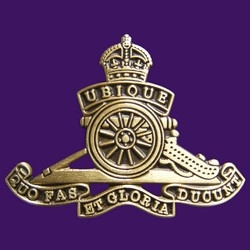
Stanley Harold Burch

'A' Battery with 165th Brigade
Driver 17227
 |  | |
| Royal Field Artillery 'A' Battery with 165th Brigade Driver 17227 | ||
| Died 31st October 1918 |
Stanley Burch's Parents | ||
Stanley Harold Burch was the fourth of eight children born to parents George Charles Burch and Mary Elizabeth (nee Davis). His family also included three older half-brothers from his father’s first marriage | ||
The Burch Family |
|
George and Mary Burch then went on to have eight children
together, beginning with seven boys in a row. Reginald Thomas (1884), Charles
Henry (1885) and Arthur Douglas (1888) all preceded Stanley Harold (1889). By the time of the 1891 census, John Frederick
(1891) had also arrived. George and Mary appear in the 1891 census living at
‘Forgetmenot Cottage’, on Combe Down. This was on a road called Williamstowe,
which is a turning off The Avenue. [Is the cottage still there?] They were living with
the three boys from the first marriage (George junior, William and Vivian),
plus Reginald, Charles, Arthur & John, but Stanley is missing from the list. He is to be found on census night aged 1 and
staying/living in Shipston-on-Stour with his maternal grandfather. Mary went on to produce her 6th and 7th
(and George’s 9th & 10th) sons Ernest Sholto (1893)
and Harold Thomas (1896); both born at Combe Down. |
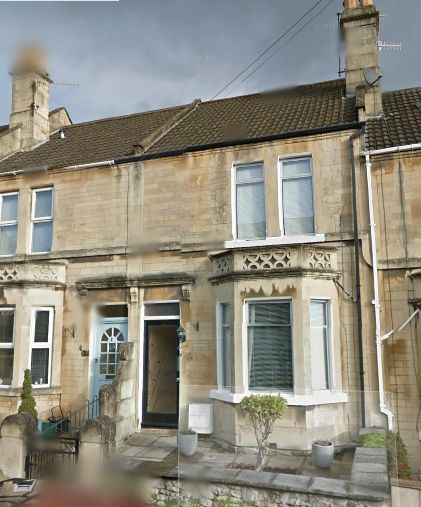 44 Lyndhurst Road |
|
In the same year, George junior (Stanley's eldest step-brother) married and remained living locally in Bath, carrying on the trade of a licensed grocer in Weston. William
married the following year and also stayed in Bath, continuing into the cabinet-making trade. One year later, at the time of the 1901 census, the family was living at 12 Ringwood Road. Of Stanley’s three elder step-brothers, only Vivian was still at home, now a French polisher aged 19. Charles (16) was a bus conductor, with all the younger siblings still attending school. Stanley’s eldest brother, Reginald, had apparently joined the military as he was recorded in 1901 as being in barracks in Canterbury. 12 Ringwood Road; home to the Burch family from 1901 ‘Silver’ Wedding: a family affair
In 1902, it was the turn of Vivian (the youngest of Stanley’s elder stepbrothers) to marry.
His bride was called Rosalie Leggatt Silver. Note that the middle name
'Leggatt' coincides with Vivian’s mother's (Emily) maiden name and that the surname
coincides with Vivian’s brother's (William) middle name. Further digging into birth and marriage records reveals that
Emily’s sister (Julia Leggatt) had married a publican called George Silver in
Uxbridge, Middlesex, in 1874. Hence when William was born to George and Emily
Burch in 1877, the inspiration for his middle name ‘Silver’ was close at hand
and a very poetic, arboreal-sounding name to couple with ‘Burch’ as a surname.
But, more interestingly, George and Julia Silver had a daughter in 1883 by the
name of Rosalie Leggatt Silver; this means that Vivian’s 1902 marriage was to
his first cousin. A proper family occasion! 1904 reports of school prize-givings show that Stanley’s
brothers Ernest & Harold attended East Twerton School, winning prizes for
their good attendance in that year. The Parish board of Twerton had to
regularly assess the capacity of the Parochial School (opposite Twerton
station), East Twerton School (next to St Peter’s – now Oldfield Park Infants)
and South Twerton (now Oldfield Park Juniors) and adjust intake accordingly.
Hence it seems that Stanley attended South Twerton while his brothers were
admitted to East Twerton. The family homes at Lyndhurst Road and Ringwood Road put them roughly
between the two schools. In 1908, Theodosia – the one daughter among ten brothers – died
aged 9. Stanley working at Pitman Press
In 1911, Stanley
(aged 21) was working as a bookbinder’s machinist and living with his parents
(George was then 64 and still a cabinet maker) plus Charles (then 26 and a
motor engine driver at an iron foundry; probably Stothert & Pitt), John (20, shorthand clerk), Ernest
(17, stereotyping apprentice) and Harold who, at 14, was listed simply as
having ‘left school’. Stanley’s
eldest brother Reginald was listed in the census in Colwyn Bay, North Wales, as a commercial traveller, staying at a
hotel. From modest beginnings in premises in Nelson Place West (known as the ‘Phonetic Institute’, near Norfolk Crescent), Pitman’s business moved first to Albion Place (Upper Bristol Road; ‘Second Phonetic Institute’, 1851), then to Parsonage Lane (between Westgate St and Upper Borough Walls; ‘Third Phonetic Institute’, 1855) and then to Kingston Buildings, next to the Abbey (‘Fourth Phonetic Institute’, 1874). |
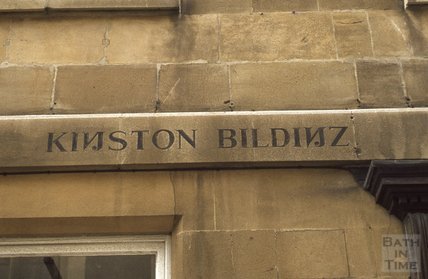 | ||
| The street name sign for Kingston Buildings in Bath is famously written with Pitman shorthand declensions, denoting the earlier presence of the Phonetic Institute here. [Image: Bath In Time] |
| When it outgrew its fourth premises at Kingston Buildings in 1888, the Pitman Press moved to purpose-built premises on the Lower Bristol Road. This was known as the ‘Fifth Phonetic Institute’ and was the precursor to the huge (recently demolished) premises today known as the Bath Press site. |
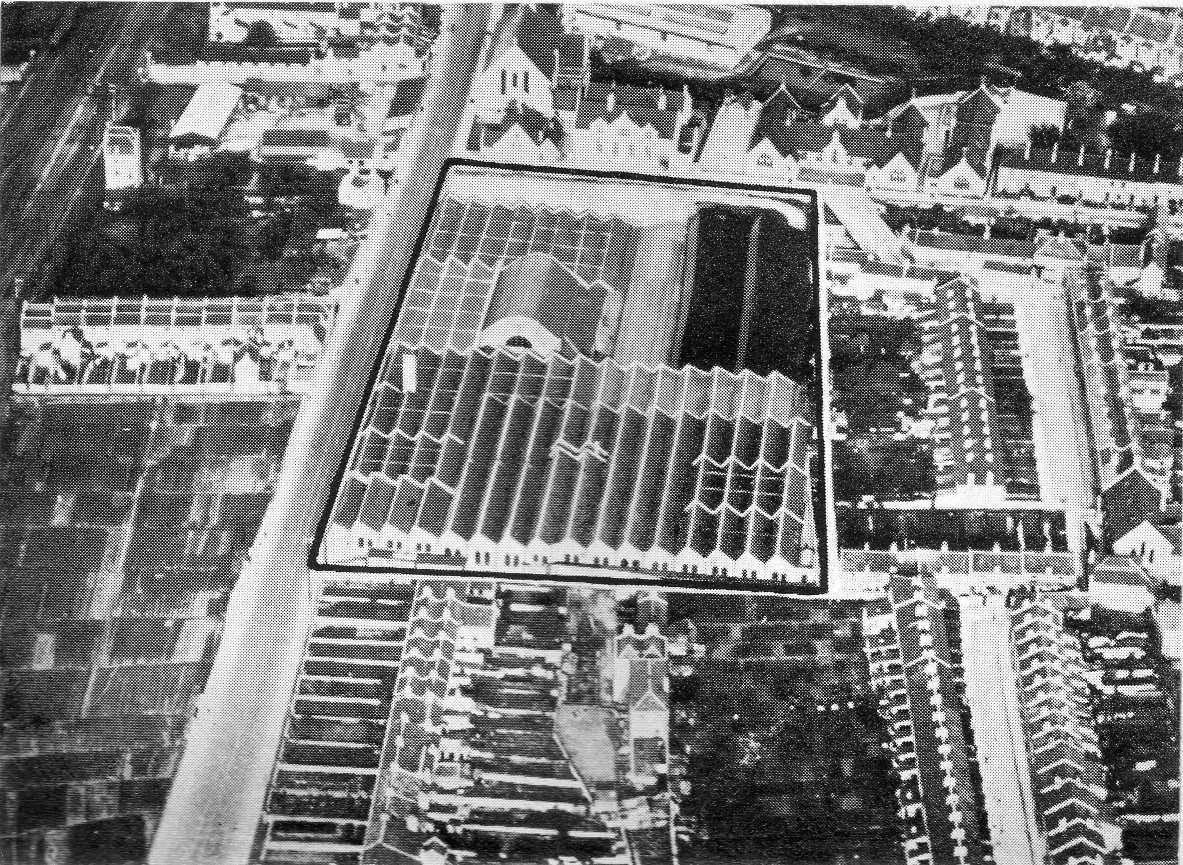 | ||
|
An aerial view of the Pitman Press site in connection with its expansion in 1924. This photograph also
shows long-disappeared housing to the bottom and left-hand sides of the
photograph. The row between the Lower Bristol Road and the railway (on the
left-hand side of the photo) was called Hopmead Place. |
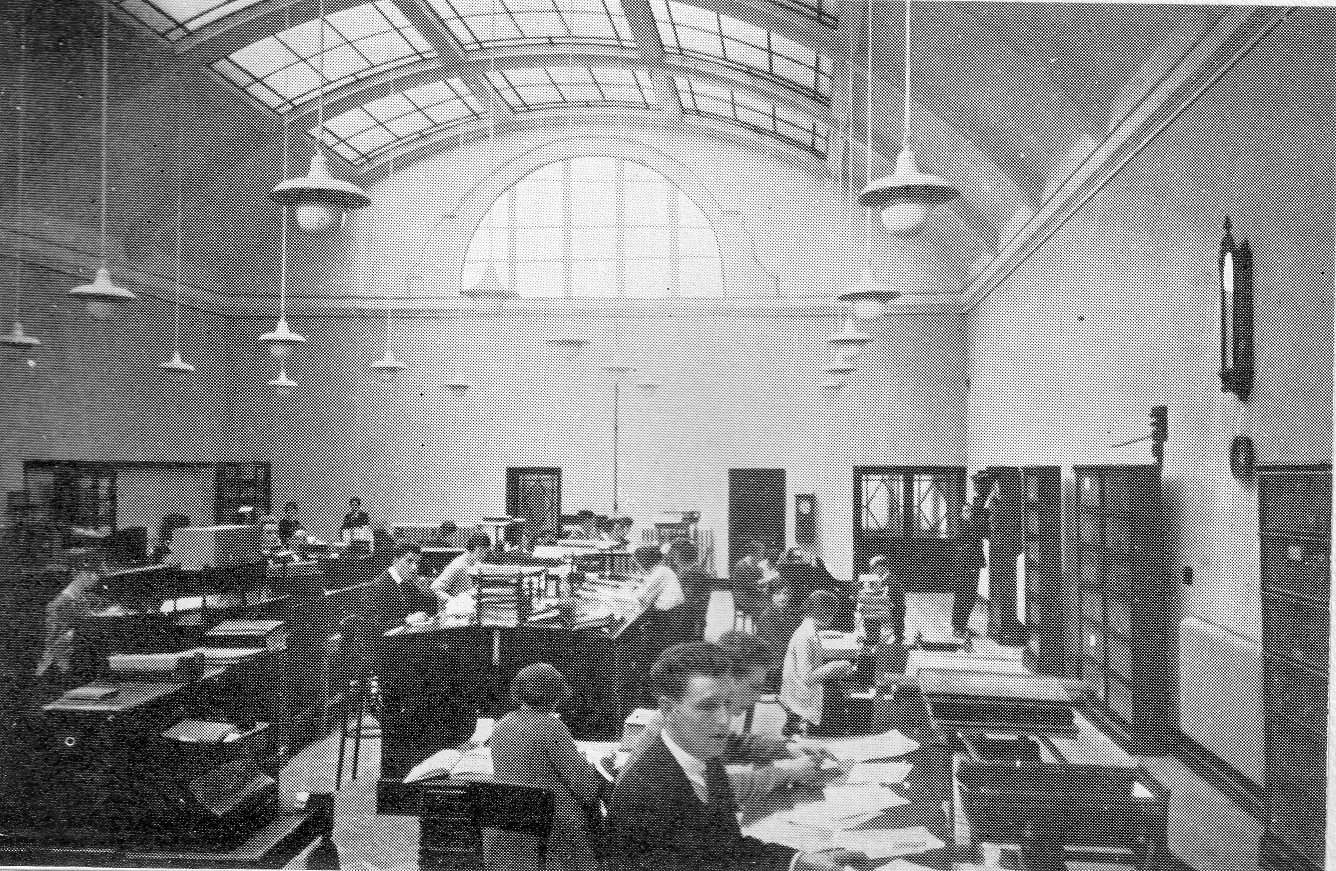 | ||
|
The office where Stanley’s brother John worked. This section of the
original building could still be discerned in the roofline of the factory site until it was demolished in 2018 (below). | ||
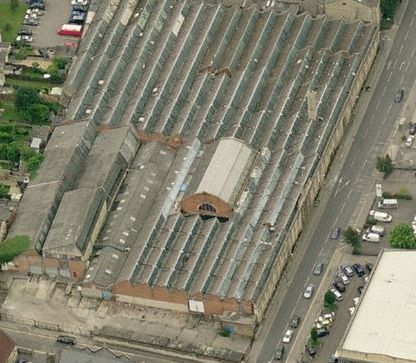 |
| While Sir Isaac Pitman died in 1897, the Burch lads working at the company would probably have come into direct contact with Isaac’s sons, Alfred & Ernest, who continued management of the company from 1884. In 1913, a celebratory dinner was held at Fortt’s Restaurant in Milsom Street (now Waterstone’s bookshop) in honour of the centenary of Sir Isaac’s birth. A contemporary newspaper report names the attendees, with Stanley and John both listed. Stereotyping (in which Ernest was employed) was the process of producing a plate from which to print, rather than typesetting individual letters. This made reprints of books much easier, for example, as the original plates could be re-used, avoiding the process of re-setting pages and pages of text. |
Stanley Burch in WW1 | ||
|
When the War came, it touched the Burch family very
significantly, owing to the number of young men of appropriate age for service. Stanley’s eldest brother Reginald had already joined the military
in 1901 and was in the Royal Welch Fusiliers, having enlisted while living at Glas
Newydd, Victoria Park, Colwyn Bay. Within weeks of the war beginning in August 1914, the Bath
Chronicle and Weekly Gazette began carrying lists of those who had joined up;
these names were submitted by – and listed under names of – employers. Stanley’s brother Ernest, previously
connected with the Somerset Light Infantry 4th Battalion in the
years before the war, was listed on September 26th under a
contingent from Sir Isaac Pitman & Sons. Royal Field Artillery We don’t know exactly when Stanley himself joined up, but he
served with the Royal Field Artillery, whose job it was to bombard enemy lines,
often in preparation for assault by infantry soldiers. The artillery would have
devised bombardment strategies to an agreed plan: for example, if an attack on
enemy lines was due at 3pm, they might have utilised large shells to blow
trenches and defences open, before deploying shrapnel to inflict maximum damage
and cut through wire, culminating in a crescendo of explosive hell, prior to
stopping completely at 3pm, allowing the infantry to engage, or creating a moving barrage behind which infantry could advance. Equally, due to the damage inflicted by artillery, both
sides targeted each other’s guns and there was a balance to be struck between
the range of fire of one’s own guns versus those of the enemy. Stanley was in CLXV (165th) Brigade of the Royal Field
Artillery, which was originally part of the battle order of 32nd Division.
Individual divisions were generally formed of four brigades (each of these
comprising multiple infantry battalions, plus a machine gun company and a
trench mortar battery). Then each division also had field artillery (RFA) batteries, Royal
Engineers, Royal Army Medical Corps and Army Service Corps. The activities of 32nd
Division are summed up at http://www.1914-1918.net/31div.htm
On
10th December the War Office authorised the formation of the Fifth New Army. Like
the other Kitchener Armies, it comprised six Divisions, in this case numbered
37 to 42. What eventually became 32nd Division was originally numbered 39th. In
April 1915, the original Fourth New Army was broken up and its units converted
for training and draft-finding purposes. When this took place the Fifth New
Army became Fourth New Army and its Divisions were renumbered to 30th - 35th:
thus what we remember as 32nd Division was born. The
Division was largely comprised of locally raised units often known as
"Pals". It was a predominantly Northern Division, although locally
raised units from Birmingham and Bristol were also in the structure. After
(in most cases) commencing training near home (although the Glasgow battalions
moved to camp at Gailes and the 11th Border at Blackhall), the units were moved
in May 1915 to concentrate in Shropshire but Prees Heath was found to be too
wet for training and the brigades instead moved to Yorkshire (Wensley and Richmond,
with use of the firing ranges at Strenshall). It was not until August that the
Division moved for final training and firing practice at Codford on Salisbury
Plain. In
November 1915 the Division received a warning order to prepare to sail for
France. But on 2nd December final orders were received that the 31st Division
would go to Egypt, accompanied by the artillery of 32nd Division. The artillery
from 31st Division would join 32nd Division in France. So 31st Division and
32nd Division effectively ‘swapped’ artillery units in November
1915. The 165th RFA, now with 31st Division...: …sailed
from 7th December, with Divisional HQ being established at Port Said on Christmas
Eve. The last units arrived in Egypt on 23 January 1916. 1916 Battle of the Somme 1916 The
Battle of Albert including the attack on Serre 1917 Arras Offensive
The Third Battle of the Scarpe First Battle of the Somme 1918
The Battle of St Quentin Battles of the Lys Advance in Flanders Final Advance in Flanders
The Battle of Ypres | ||
Stanley Burch's Death | ||
|
Stanley Burch died on 31st October 1918, just two weeks short of the end of the War. Although this date corresponds to a specific action in which 31st Division was engaged (namely the action of Tieghem) Stanley is recorded as having died of pneumonia. We do not know for how long he was ill and whether he spent time in a field hospital prior to his death. He was the last of the 33 South Twerton men to die. | ||
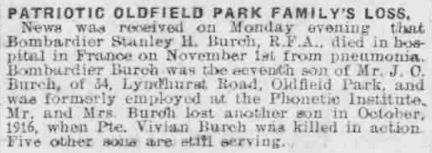 |
|
When Stanley’s death was announced in the Bath Chronicle & Weekly Gazette in November 1918 (above), the piece mentioned that Stanley’s step-brother Vivian had previously been killed in 1916. He was killed in action on 17th Oct 1916, while serving with the 2nd Bttn, Hampshire Regt at the age of 35. The article further stated that ‘five other sons’ were still serving. These were Reginald (Royal Welch Fusiliers), Arthur (Army Service Corps), John ‘Frederick’ (Royal Army Medical Corps), Ernest (4th Battalion, Somerset Light Infantry) and one other? The Bath newspaper of 9th November 1918 also carried a photograph of Stanley Burch. He is one of the few soldiers for whom we have a photograph. The caption gives him the rank of 'Gunner', whereas he is listed elsewhere as 'Bombardier' (a higher rank). In fact his medal card has 'Lance Bombardier', but this is crossed out in favour of 'Driver'.
This from www.findmypast.co.uk: A driver was a soldier trained in the management and use of horses. The six horses drawing the gun, or wagon, were driven by three drivers, all on the nearside horses, and much training was required before drivers would be rated as competent. The drivers, of course, also looked after the horses and the management, condition and state of health of these animals was regarded as one of the most important functions in the battery. |
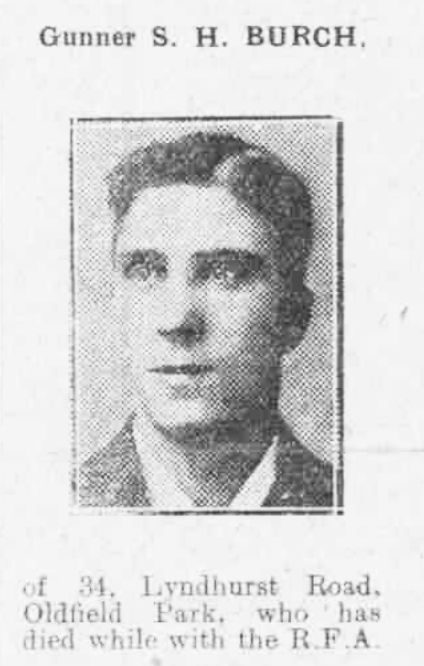 |
Burial | ||
|
Bombardier Stanley Burch is buried at Arneke British Cemetery in France From the Commonwealth War Graves Commission website:The
cemetery was begun by the 13th Casualty Clearing Station which moved to
Arneke from the Proven area in October 1917. It was joined by the 10th
and 44th Clearing Stations in April 1918. The cemetery was used by
these hospitals until the end of May, and again from July to September
1918 by the 62nd (1/2nd London) Clearing Station. In November it was
used for a short time by the 4th and 10th Stationary Hospitals. A few
French soldiers were buried from clearing stations in April 1918 and
French units buried in Plots IV and V at the north-west end of the
cemetery, mainly in May and June 1918.
Arneke British Cemetery contains 435 Commonwealth burials of the First World War and five from the Second World War. There are also 126 French and five German war graves. | ||
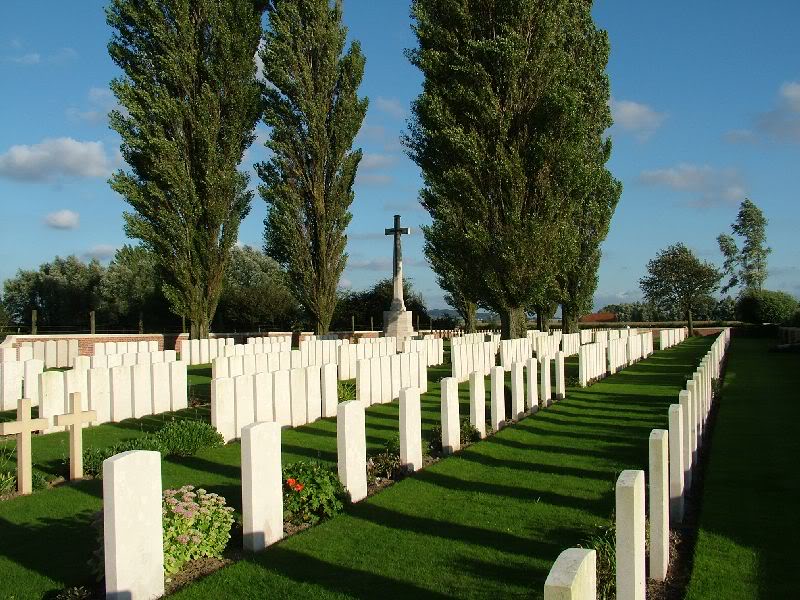 | ||
|
Arneke Cemetery | ||
In June 2019, Bath resident Mike Sumsion included Arneke cemetery on his itinerary when visiting some of the WW1 cemeteries and battlefields of the Western Front. He took with him the thoughts of Oldfield Park Junior School pupils, embodied in a small memorial cross which was placed on Stanley Burch's grave. We are grateful to Mike for helping the school with this act of remembrance and for supplying the photographs below: 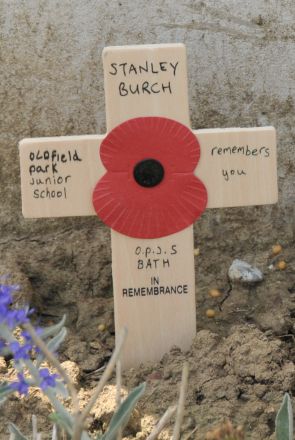 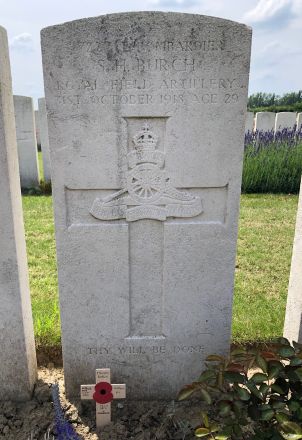 |
Decoration | ||
|
Bombardier Stanley Burch was posthumously awarded the British
War Medal and the Allied Victory Medal. | ||
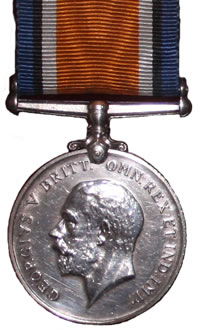 | 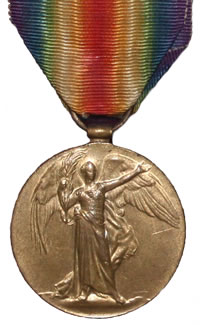 | ||
| British War Medal 1914-18 | Allied Victory Medal |
Commemoration | ||
 In addition to his inscription on the South Twerton School memorial, Stanley Burch is commemorated as follows: | ||
|
Bath War Memorial See separate page for details of the Bath War Memorial. Stanley Burch's inscription: |
 |
|
Pitman Press Memorial The Pitman Press works on the Lower Bristol Road also created a memorial in 1924 that carried the names of workers from the company who gave their lives. It includes 4 South Twertonites - including Stanley Burch - and the brother of George Strong. See the additional page on the Pitman Press memorial. |
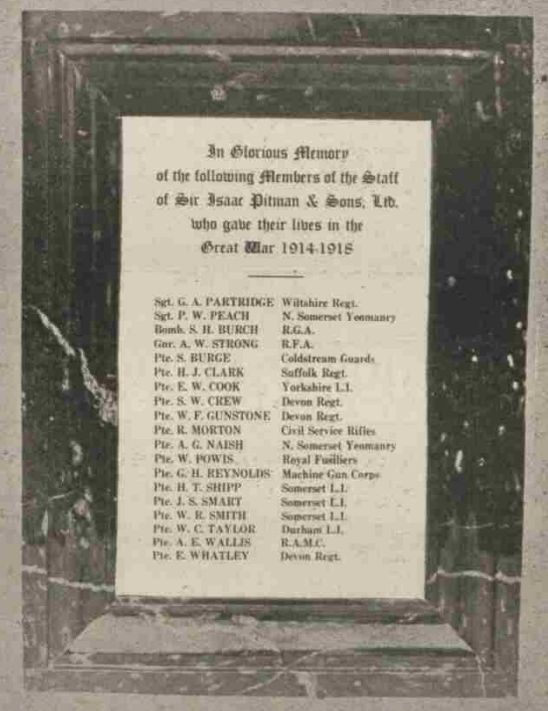 |
|
Ascension Church Memorial As a parishioner of the Ascension Church, Stanley Burch's name is inscribed on the oak tablet in the Church (see separate page for details of the Ascension Church Memorial): |
 |
Further Information |
The Burch family beyond the war
From newspaper reports, we know the following details of the Burch family: Sept 1922: Mary (mother) dies Also detailing the specifics of service of her seven sons in WW1.
Dec 1922: George (father) dies This item includes a few other details of family history and confirms that Stanley 'died in the service' rather than having been killed.
1923: Ernest marries and brother John is Best Man
We have been fortunate enough to make contact with Mahlon Burch, a grandson of Ernest & Olive Burch. His father was Alan Burch, about whom he tells us the following: "Alan Burch (my Dad) was batman to General Bourne in the Indian artillery! My Dad was a very capable musician so was much needed by officers and soldier to help lift their spirits with endless sing-alongs around the mess hall piano. He was very fond of the General and learnt many things a slightly upper working class boy from Bath might never have learnt … Like how to fold a dress jacket so that it could be worn straight out of the suit case, without pressing! The General was very close to his wife… and the first order of business at a new post was to put out the picture of the General's wife and the photograph of the General's children!" Alan Burch emigrated to New Zealand in 1949, where Mahlon also lives. Many thanks to Mahlon for his contribution! Later FamilyWe have also been able to trace the following details of Stanley's siblings:
|
Living RelativesIt would be great to hear from any other living relatives of Stanley Burch. Please get in touch!If you have any further information on Stanley Burch or want to suggest corrections / improvements for this page, please use the Contact page to get in touch. |